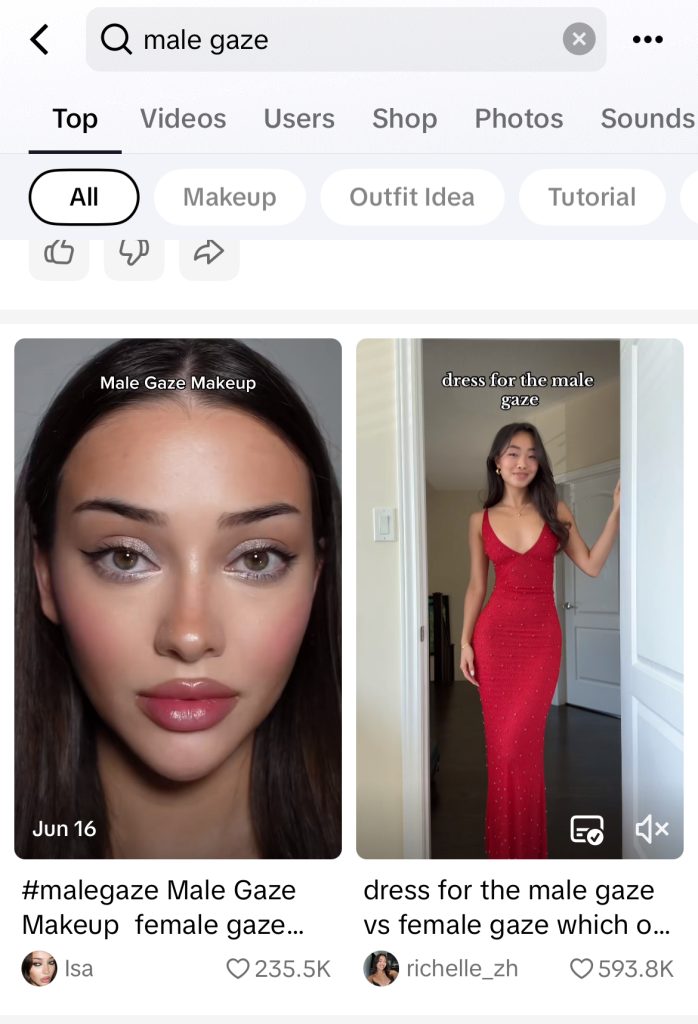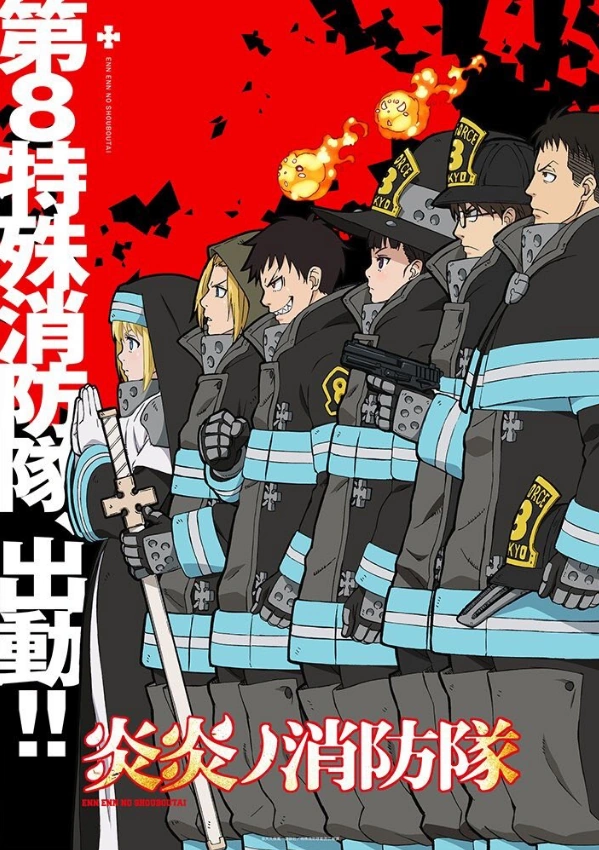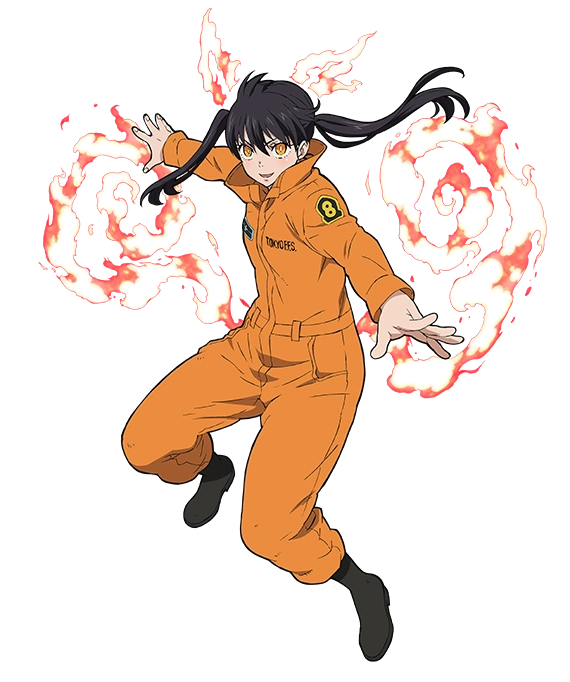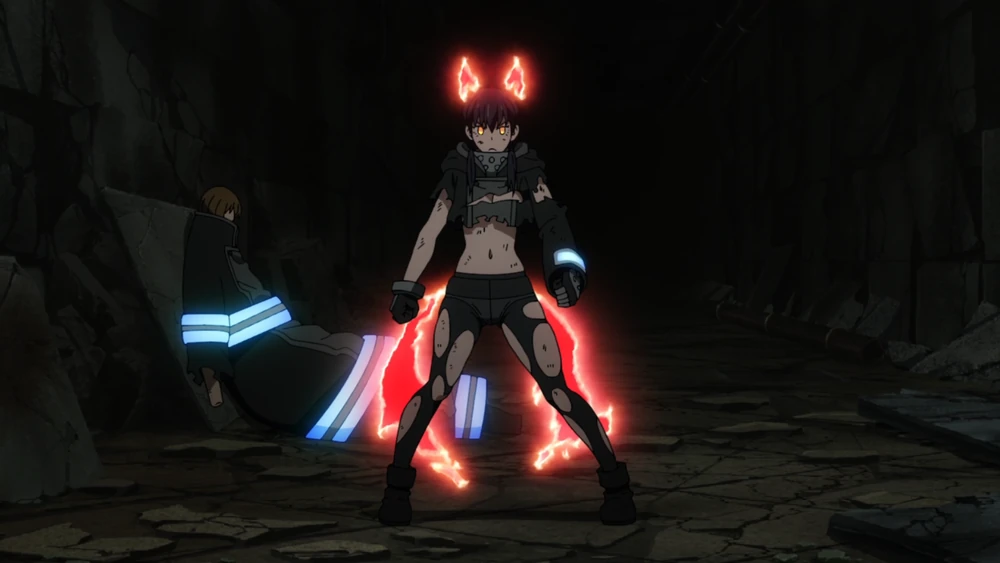
The phrase male gaze is a term that currently gets thrown around social media to refer to how women should look to either attract or detract from men through how they dress or their make-up. But that is not what the term means.
As defined by Lorkeck (2016), the male gaze is a term used in media to refer to the sexualisation of women in on-screen media and how they are portrayed as an “object of heterosexual male desire”. The term was first coined by feminist film theorist Laura Mulvey to highlight the media’s portrayals of women.
An example of this would be the anime Fire Force.

The first volumes of the Fire Force manga were first released in 2016, and it was later animated by David Production and released in 2019. The anime is set in a post-apocalyptic Japan where people are now mysteriously spontaneously combusting into flames. The anime follows the main character, Shinra, a teen with fire abilities who wants to become a hero to people, as he joins a special fire force team that dedicates their lives to fighting to stop these events (Fire Force, 2024). The anime follows a traditional hero’s journey narrative; the chosen hero with special gifts goes on a journey to help save the world. The story is exciting and paired with good animation; however, the anime’s downfall is its copious amount of fan service. Fan service is the act of writers including scenes within media to please the fans (Cambridge Dictionary, no date); in anime, it often refers to the sexualisation of female characters.

An example of the anime’s fan service in the show is carried out, is through the character Tamaki; her character is often portrayed as half-naked with ripped clothes throughout the anime, even during important fighting scenes. The anime decides to play it off as part of her character, referring to a particular power she has called “Lucky Lewd Syndrome”, where her clothes come off during random and embarrassing moments (Robberts, 2023). To take it further, during these scenes, the male characters are present to see her naked or even cop a feel on accident. It could be argued that the creator, Atsushi Ohkubo, uses the excuse of it being a power that she has to portray her as half-naked during these scenes. Her character is treated as a sexual object for the sheer purpose of fan service to cater to the male audience.

The scenes where Tamaki can be seen as half-naked often feel forced and out of place because they are during moments that should be serious or scenes where her being naked is unnecessary. For example, when Tamaki is first introduced in the show, Shinra ends up mysteriously being able to put his hands in her bra. She gets upset and explains it’s due to her “Lucky Leechery” power, and then he again mysteriously manages to put his hands in her trousers, which she once again protests against.
To conclude, Tamaki’s character is over-sexualised to pander to the male audience as a form of fan service, and the author uses the excuse of it being a power that she has to carry this out.
References
Cambridge Dictionary (no date) Fan service. Available at: https://dictionary.cambridge.org/dictionary/english/fan-service (Accessed: 30 November 2024).
Crunchyroll (2019) Fire Force Opening 1 | Inferno by Mrs.GREEN APPLE. August 10. Available at: https://www.youtube.com/watch?v=JBqxVX_LXvk (Accessed: 30 November 2024).
Jewel Abyss (2020) Tamaki Lucky Lecher Lure Compilation | Fire Force Funny Moments January 4. Available at: https://www.youtube.com/watch?v=y2tXQC70PNw (Accessed: 30 November 2024).
Loreck, J. (2016) ‘Explainer: what does the “male gaze” mean, and what about a female gaze?’, The Conversation. Available at: https://theconversation.com/explainer-what-does-the-male-gaze-mean-and-what-about-a-female-gaze-52486 ( Accessed: 30 November 2024)
Roberts, S. (2023) Could Fire Force’s Over-the-Top Fan Service Be Its Downfall?. Available at: https://www.cbr.com/fire-forces-too-much-fan-service-debate/#:~:text=Described%20in%20the%20series%20and,of%20intimate%20or%20humiliating%20situations. (Accessed: 30 November 2024).
Wiki Fandom (2024) Fire Force (anime) Tamaki Kotatsu. Available at: https://fire-force.fandom.com/wiki/Tamaki_Kotatsu (Accessed: 30 November 2024).
Wiki Fandom (2024) Fire Force (anime). Available at: https://fire-force.fandom.com/wiki/Fire_Force_(anime) (Accessed: 30 November 2024).


Hi Lailat, I am really frustrated and shocked that an anime I kept on my anime list for a long time consists of this unnecessary and shameful male gaze. I even liked their opening, Inferno, before I watched it; it is a good song that makes me feel the coolness and passion of Shounen. It is the reason why I know about this series and have put it on my list. At first, I really thought of Fire Force as an enthusiastic Shounen who was full of positivity, cool and passionate, just like any other common Shounen, but unexpectedly, it objectified Tamaki in such a way that is pointless to the plot. I can’t express how much I am disappointed. Why is “touching” or “looking” female body considered as “lucky” or funny? It is ridiculous and obviously comodified Tamaki by using the Lucky Leechery setting as an excuse. This also reminds me of Highschool of the Dead, which is a great series but served with massive “fan service,” and the audience criticised it a lot too.
Let’s get back to the point; I am sorry that I look too excited. First of all, mentioning “fan service” is a great choice, and I was want to include it in my blog too. It is a term in anime that really matches the male gaze theory – sexualising and objectifying mostly female characters to serve to pleasure the fan, which is an unnecessary culture in my perspective; I just want to enjoy the plot.
It is good to see that you always explained the theory in a straightforward and simple style, which makes people easily understand the theory quickly without being overwhelmed by the complex explanation. However, I think it would be great to reduce the introduction of the Fire Force a bit and just emphasise Tamaki’s situation. Then, replace it by elaborating more about the male gaze following the Laura Mulvey reading so that the theory and the example’s content related to the theory could be more balanced.
Ultimately, it is a great blog that stimulated me to have many thoughts. I hope my suggestion helps, and I hope the male gaze phenomenon can be reduced not only in terms of anime but also in any other narrative.
Hi Lailat! I really like the example you provided. The portrayal of Tamaki in Fire Force perfectly illustrates the concept of the male gaze as described by Laura Mulvey. It gave me a clearer understanding of how the male gaze manifests in anime and its specific forms of expression. The frequent use of “fan service” not only disrupts narrative coherence but also reinforces harmful stereotypes, primarily catering to the aesthetic preferences of heterosexual male audiences while diminishing the character’s actual role in the story. And I think it would be great to consider incorporating more theoretical knowledge to support the example and provide some thoughts or suggestions on how to address the issue of sexualizing female characters. Overall, this is a fantastic blog, very innovative! I learned a lot from it!
I really enjoyed reading this blog! I honestly had no idea that the theory of male gaze was even on TikTok—so the use of that as a real world example was very eye opening. I also like how you demonstrated that, even in anime, the male gaze is present. Great work!